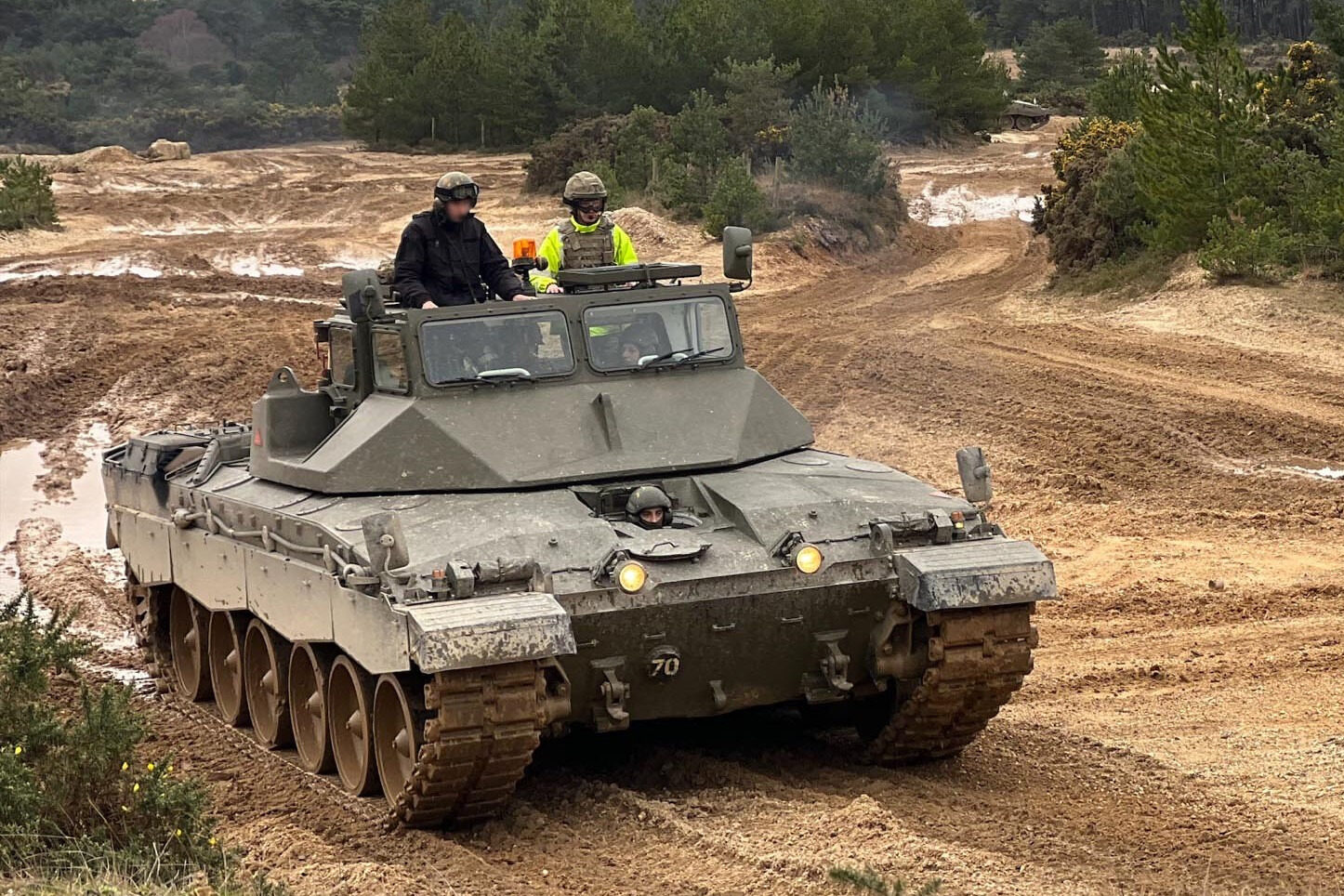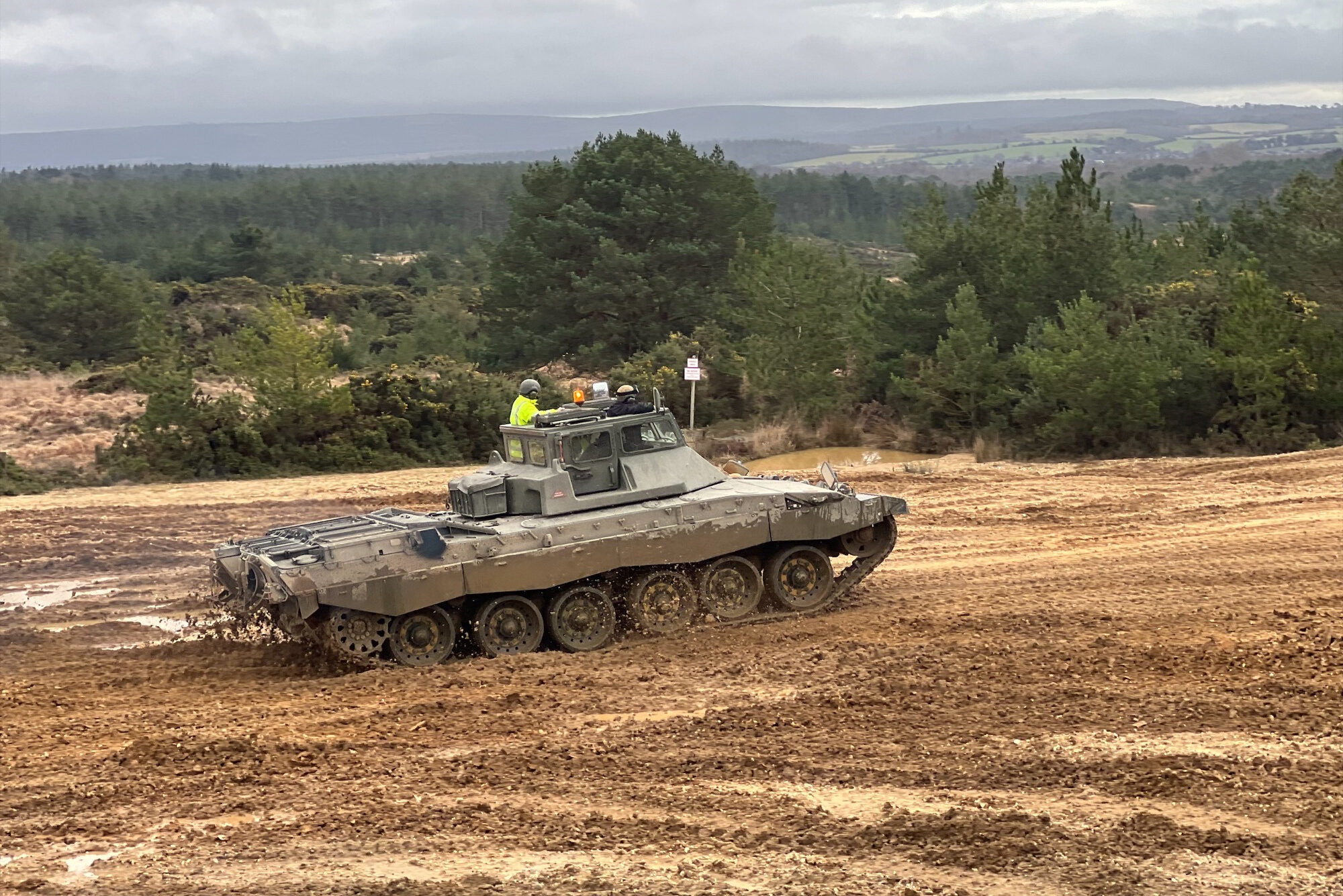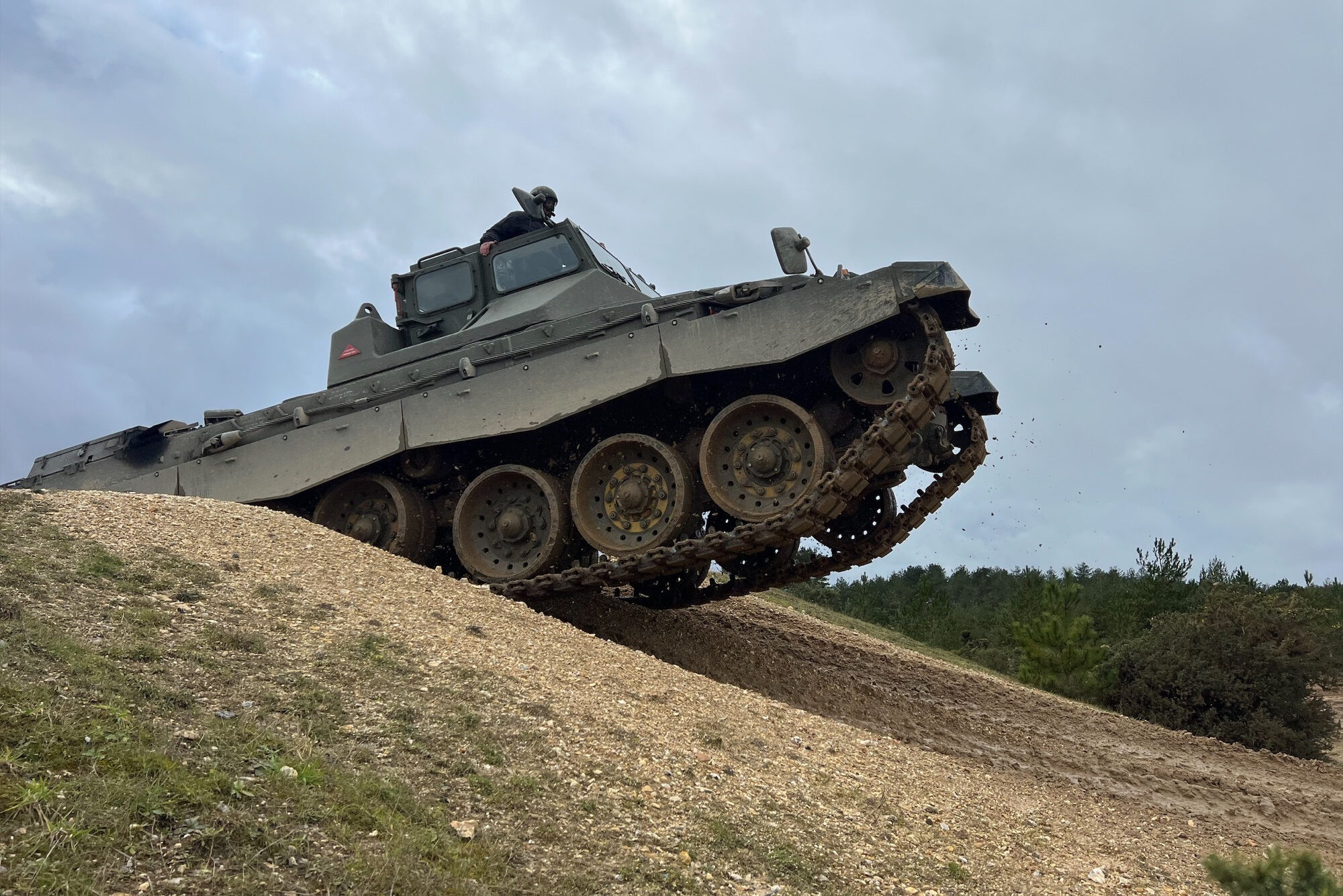
Click to see full-size image. Source: the British Ministry Of Defence official Twitter account (@DefenceHQ)
Ukrainian troops have begun training on Challenger 2 main battle tanks in the United Kingdom, less than a week after arriving there.
On February 4, the UK Ministry of Defence said on Twitter that the Ukrainians were quick to learn how to operate the Challenger 2.
“Tank crews from the Armed Forces of Ukraine have been quick to master the controls of the mighty Challenger 2 this week.
The UK is providing Challenger 2 tanks to Ukraine to help them defend their homeland and retake territory,” the ministry said.
The ministry also shared photos showing the troops training with British military instructors on the Challenger 2 Driver Training Tank (DTT).
The vehicle is based on the Challenger 2 hull. The turret has been replaced with a fixed weighted superstructure to accommodate an instructor and up to four trainees. Weighting the superstructure replicates the weight of the standard Challenger 2 in operational service. 22 DTTs are in British service.

Click to see full-size image. Source: the British Ministry Of Defence official Twitter account (@DefenceHQ)

Click to see full-size image. Source: the British Ministry Of Defence official Twitter account (@DefenceHQ)
Prime Minister Rishi Sunak announced on January 15 that the UK would send 14 of its Challenger 2 tanks to Kiev forces. When the Russian special military operation in Ukraine first started, London declined to supply such heavy weapons.
The Challenger 2, which could weigh as heavy as 75 tons when fully equipped, is armed with a L30A1 120 mm rifled gun, protected by a classified Chobham composite armor and powered by a Perkins CV12-6A V12 diesel engine with 1,200 bhp.
The UK’s decision to supply the Challenger 2 encouraged other Western countries to supply Ukraine with some of their most advanced main battle tanks. The United States pledged to provide 31 M1A2 Abrams, while Germany said it will deliver 14 Leopard 2s to Kiev forces.
These tanks are supposed to help Ukraine launch a large-scale offensive against the Russian military next Spring. However, there are doubts that a few dozen, or even hundreds of tanks will make a difference when confronted by Russian artillery, and anti-tank fire.






Iron coffins.
…
Six weeks to train. Six seconds to die!
Exactly. The same like other ones. Russian artillery power will take care of them.
Good luck Nazis you will need it.
If little briton wants to sell you ships buy them cause they have knowlegde about it but tanks stay away from that. Britania once ruled the waves but never the continent. They cant do land war.
Now Britania waves the rules.
‘Waives’…… Sorry, I’m being a Grammer junky.
Titanic, HMS Hood.
HMS MY- EX -WIFE ,she was known as the ‘Submarine’ because she went down a lot while being full of seamen.
Gotta sink the boat that’s delivering them.
People with big mouths might be possible to do it.
Wertvoller Schrott
75 tons that’s a modern day heavy tank.
Typical western. They are better armed and has more tools. The price is the terrain is limited for them.
Its no joke they might have to have some bridges with them for crossing rivers.
Its one of the reasons why USSR stopped using the KV1 and KV2 and made more T34 and their cousins.
Russia trembles — 14 mighty Challengers will appear to make a big difference….
Typial Rustican common sense. The rest of the big package is censured away and even added ha ha in the most self spanking way.
this makes up for northern reticulated retards starting the war with 1000 tanks and yet are winning so hard that 22 leo 1’s will charge it in someway?
if you were as demented as you are ignorant they would build special crosswalks , just for you.
They have might have 500 friends including the cousin abram and leopard
Cannot you add up the number of Challengers, Abrams and Leopards. Does the addition of all of them make 500? You seem to be mentally challenged.
A turretless tank. Wow.
Even blind ones can do photoshopping now :)
bLIND PEOPLE CAN DO PHOTOSHOPPING TOO.
Doubts is about the writer, which cant add Piranas, Strykers, Bradleys and good and not as good tanks. France also add leigtweight transporters.
The package also add at least 100 advanced artillery units.
I might be the writer lost some fingers or even a tail in Saudi Arabia.
No its you that needs to learn how to count.
To make a difference ukraine would need 1000 tanks 2000 ifv’s and about 800 artillery peices.
They are never ever getting those numbers. Ever.
Deal with it.
We will see.
Many other things can happen in the political world too. There are sanctions.
The Ukras get a lot more stuff every day. Last shipment is 150 km missiles.
This is nonsense, a misdirection. These tanks will be manned by crews from nato countries.
The goal of this is to kill Russians by spending Ukrainian nationalists blood. It’s a win-win situation for the global deep state. It’s so sad.
That frontal plate is a tankers wet dream.
Looks like canada will get the honor of losing thier valuable tanks first!
Whilst in the UK these Ukrainian soldiers should look around and notice the lack of Ukrainian flags. Let’s hope they don’t stay too long as the people of Blighty are starting to smell a rat with the ‘covid’ thing and war on Russia thing.
Once that happens it will be downhill all the way. They wouldn’t want to get between this rogue gov’t and the people.